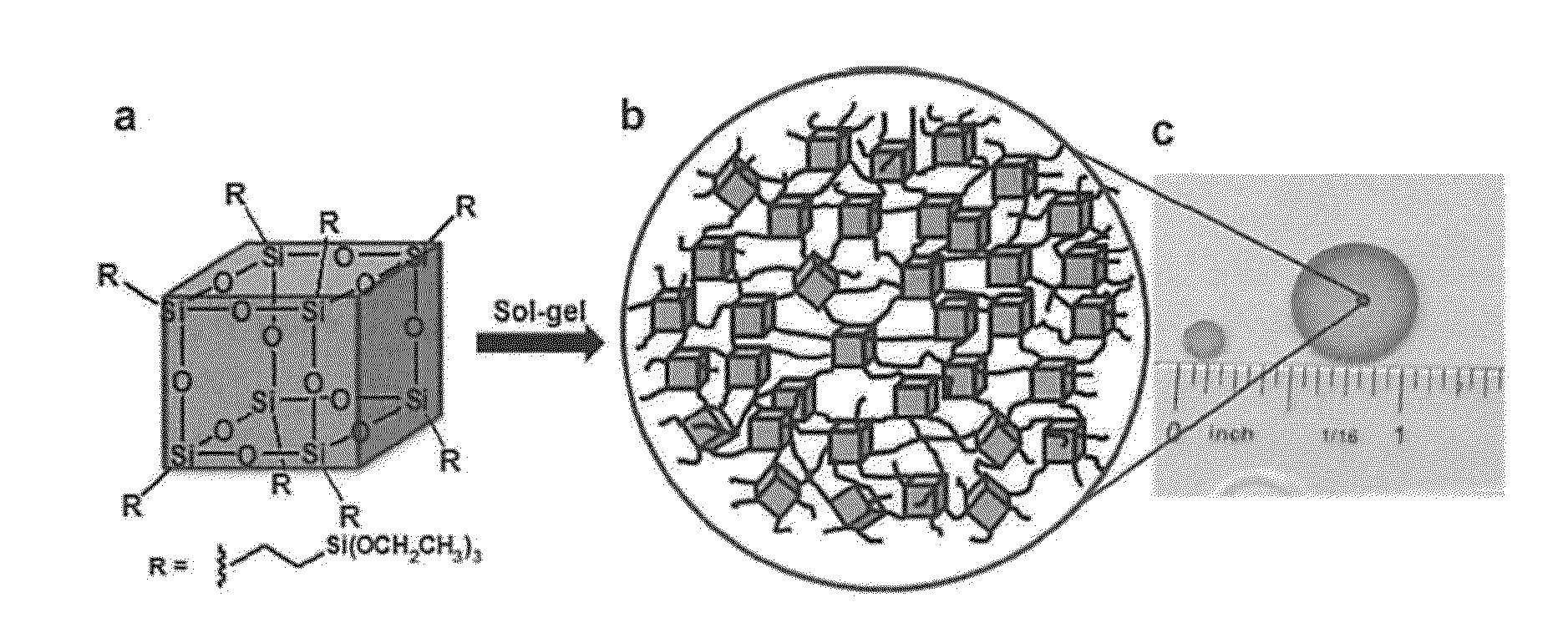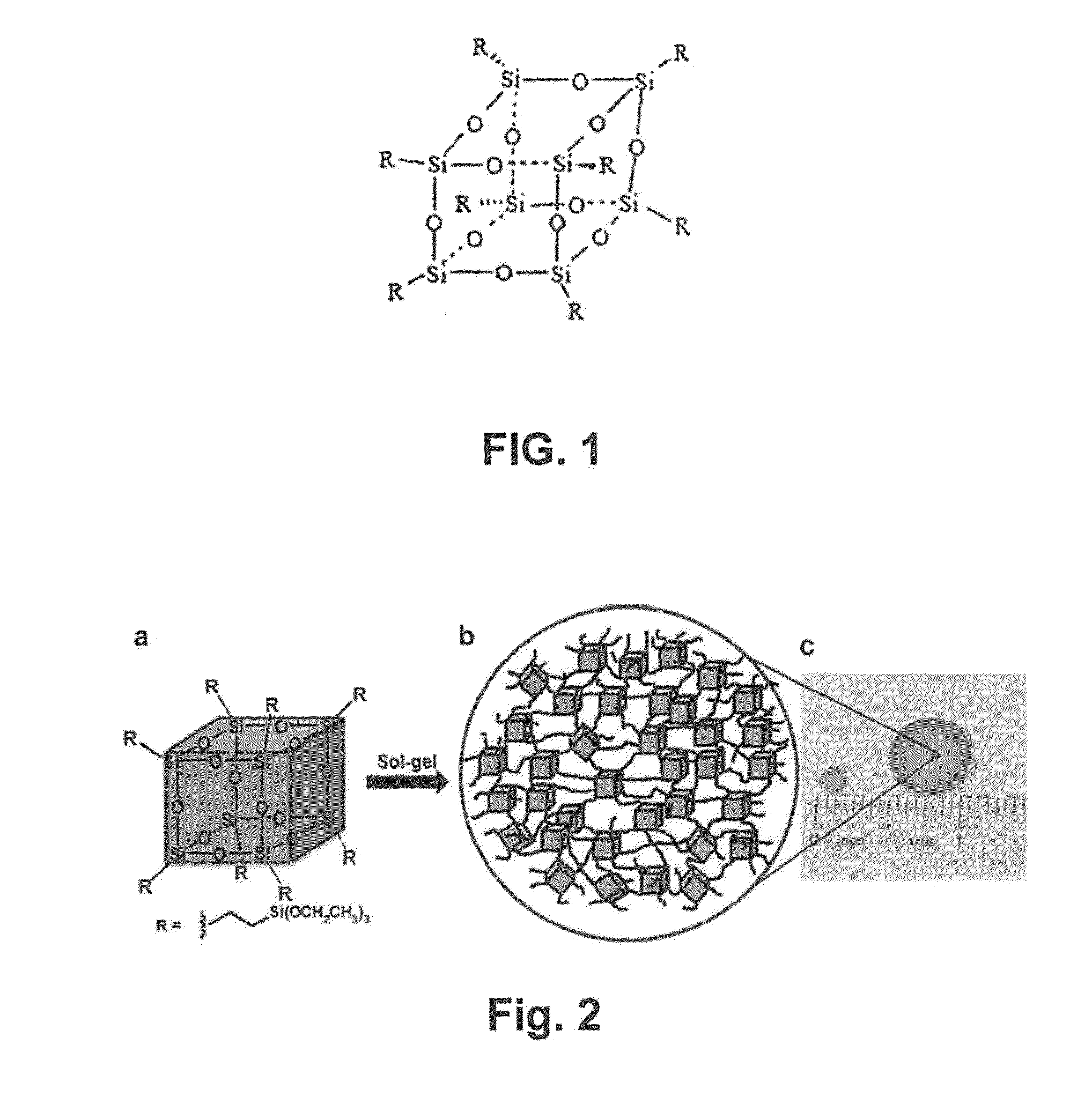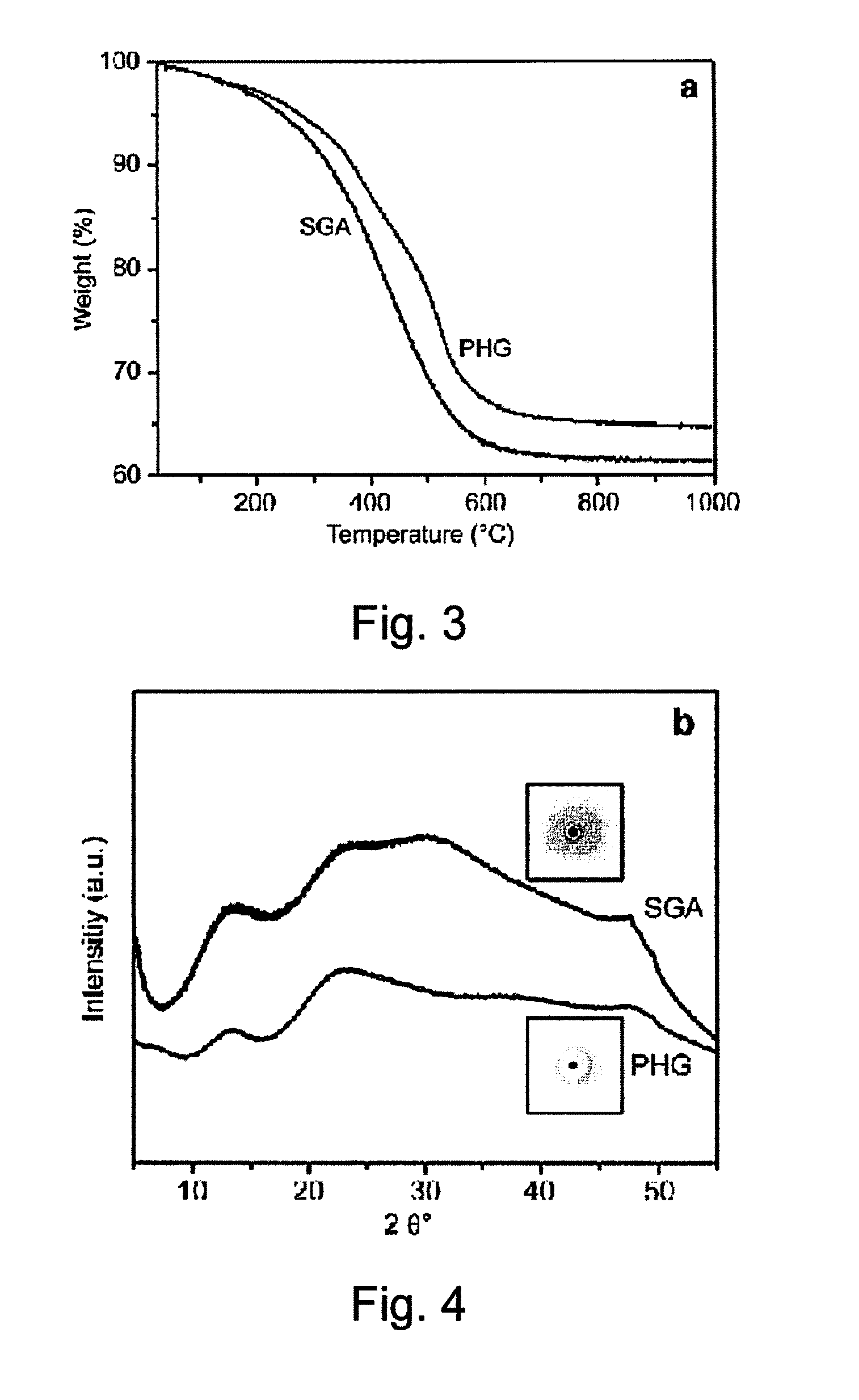Polyhedral oligomeric silsesquioxane (POSS)-based bioactive hybrid glass as a scaffold for hard tissue engineering
a bioactive glass and polyhedron technology, applied in the field of hybrid bioactive glass, can solve the problems of complex nanostructures that are difficult to achieve synthetically, the manner in which to design and fabricate bio-inspired bulk materials remains a grand challenge, and the exact tissue or organ-like complex nanostructures of bio-inspired materials of the future are not necessarily identical
- Summary
- Abstract
- Description
- Claims
- Application Information
AI Technical Summary
Benefits of technology
Problems solved by technology
Method used
Image
Examples
examples
Materials
[0088]Octavinyloctasila-sesquioxane (PSS-Octavinyl substituted), triethoxysilane, Alizarin Red S, Platinum (0)-1,3-divinyl-1,1,3,3-tetramethyldisiloxane complex solution in xylene, and other chemicals were purchased from SigmaeAldrich (St. Louis, Mo.).
Synthesis of POSS-Derived Precursor
[0089]0.15 mL of Pt catalyst was added to a stirred mixture of octavinyloctasilasesquioxane (0.5 g, 789.84 μmol) and triethoxysilane (2.6 g, 15.8 mmol) over 10 min. The temperature of the reaction mixture was controlled not exceed 30° C. The solution was then heated to 90° C. for 6 h, cooled down and stirred at room temperature overnight. The excess triethoxysilane was removed in vacuo at 50° C. to afford light yellow oil (1.12 g, yield: 77%).
POSS-Derived Hybrid Glass (PHG) Preparation
[0090]The PHG was prepared following the sol-gel method by incorporation of calcium alkoxide during the polycondensation process of the precursors. In a typical synthesis, POSS-derived precursor and 1.9 g (2 mmol)
PUM
| Property | Measurement | Unit |
|---|---|---|
| Structure | aaaaa | aaaaa |
| Flexibility | aaaaa | aaaaa |
| Bioactive | aaaaa | aaaaa |
Abstract
Description
Claims
Application Information
 Login to view more
Login to view more - R&D Engineer
- R&D Manager
- IP Professional
- Industry Leading Data Capabilities
- Powerful AI technology
- Patent DNA Extraction
Browse by: Latest US Patents, China's latest patents, Technical Efficacy Thesaurus, Application Domain, Technology Topic.
© 2024 PatSnap. All rights reserved.Legal|Privacy policy|Modern Slavery Act Transparency Statement|Sitemap



